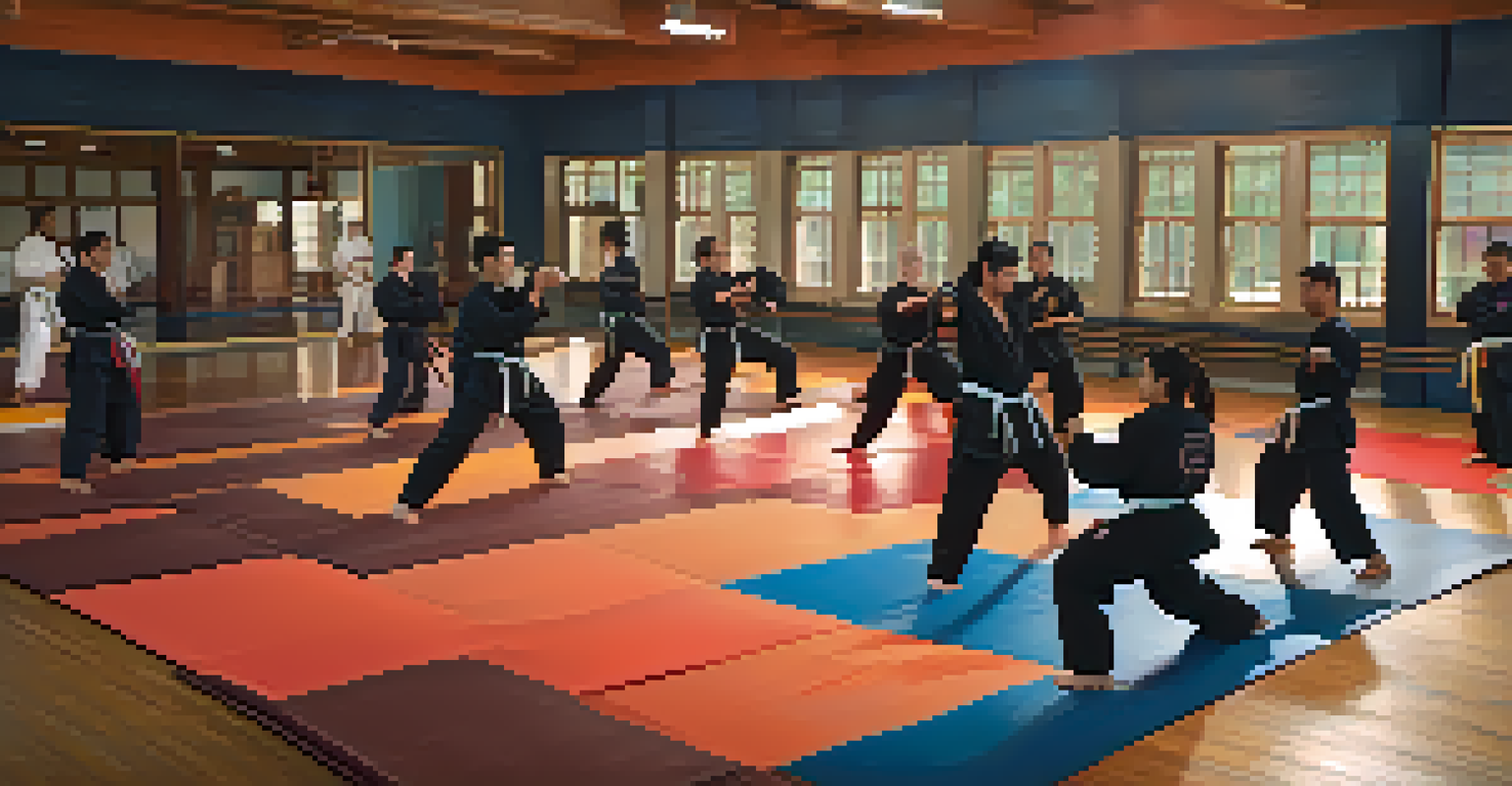Understanding Self Defense: A Guide to Personal Safety Skills

What is Self Defense and Why is it Important?
Self-defense refers to the techniques and strategies used to protect oneself from physical harm. Understanding self-defense is crucial in today's world, where personal safety can sometimes feel compromised. It empowers individuals, instilling confidence and providing a sense of security in various situations.
The best defense is a good offense.
Moreover, self-defense isn't solely about physical confrontations; it's about awareness and prevention. By learning to recognize potential threats and understanding how to react, you can avoid dangerous situations altogether. This proactive approach is a key aspect of personal safety.
Additionally, self-defense training can enhance mental resilience and decision-making skills. When faced with a threatening scenario, having practiced responses can lead to quicker, more effective actions. Ultimately, self-defense is about equipping yourself to handle challenges with confidence.
Different Types of Self Defense Techniques
Self-defense techniques can broadly be categorized into physical, verbal, and situational strategies. Physical techniques include martial arts styles like Krav Maga, Jiu-Jitsu, or Karate, which teach specific moves to escape or disable an attacker. Each style has its unique focus and can be effective in different scenarios.

Verbal self-defense involves using communication skills to defuse potentially dangerous situations. This might include assertively setting boundaries or using calming language to avoid escalation. It’s often overlooked but can be just as crucial as physical techniques.
Self-Defense Empowers Personal Safety
Learning self-defense techniques enhances confidence and equips individuals to handle potential threats.
Situational awareness is about being alert to your surroundings and identifying potential threats before they escalate. This could mean avoiding poorly lit areas at night or being mindful of who is around you. Combining these techniques creates a well-rounded self-defense strategy.
Assessing Personal Safety Risks
Assessing personal safety risks involves understanding your environment and identifying potential hazards. This could mean being aware of crime rates in certain areas, as well as recognizing your own vulnerabilities. Knowing where danger might lurk allows you to take preventive measures.
Self-defense is not just a matter of physical prowess; it is a matter of mental preparedness and awareness.
For example, if you frequently walk home at night, consider which routes are well-lit and populated. Also, be mindful of your belongings and how you carry them; keeping valuables out of sight can reduce the risk of theft. A little foresight can go a long way in enhancing your safety.
Moreover, it’s essential to trust your instincts. If something feels off, it probably is. Being in tune with your gut feelings can help you avoid risky situations before they escalate.
Building Confidence Through Self Defense Training
One of the most significant benefits of self-defense training is the boost in confidence it provides. As you learn techniques and practice scenarios, you become more adept at handling various situations, which naturally builds self-assurance. This newfound confidence can transform how you carry yourself in everyday life.
Training often involves group classes or one-on-one sessions where individuals support each other in learning. This supportive environment fosters camaraderie and shared experiences, further enhancing your confidence. You’re not just learning skills; you’re also building a community.
Situational Awareness is Key
Being mindful of your surroundings helps identify potential dangers before they escalate.
Additionally, regular practice can improve your physical fitness, which plays a role in your overall confidence. Feeling strong and capable can change your perception of personal safety, making you less likely to feel threatened or vulnerable.
Essential Self Defense Tools and Resources
There are various tools and resources available to enhance your self-defense skills. For instance, pepper spray or personal alarms can act as deterrents in threatening situations. Carrying these items can give you an added layer of security as you navigate your daily life.
Online resources, such as instructional videos or virtual classes, can also supplement your training. These platforms allow you to learn at your own pace, making self-defense training more accessible. Be sure to choose credible sources to ensure you’re learning effective techniques.
Moreover, local community centers often offer self-defense workshops or classes. These can be an excellent opportunity to meet like-minded individuals while gaining practical skills. Exploring all available resources can help you find what works best for your learning style.
Practicing Situational Awareness Daily
Incorporating situational awareness into your daily routine can significantly enhance your personal safety. This means being mindful of your surroundings, from the people you encounter to the environment you’re in. Simple practices like scanning your space can help you identify potential threats early.
For example, when walking in public, try to notice exits, potential hiding spots, and the people around you. Developing this habit makes it easier to stay alert and prepared for any situation. It’s about training your brain to be observant and proactive.
Ongoing Education is Essential
Continuous learning and practice of self-defense skills ensure preparedness and adaptability in various situations.
Additionally, using technology, such as safety apps that share your location with trusted contacts, can add another layer of security. Staying connected with friends or family can provide peace of mind and support, especially when you’re in unfamiliar areas.
The Importance of Ongoing Self Defense Education
Self-defense is not a one-time lesson; it's an ongoing learning process. As you gain skills, it’s essential to keep practicing and updating your knowledge. Techniques can evolve, and new strategies may emerge, making continuous education vital for effective personal safety.
Participating in refresher courses or workshops can help reinforce what you've learned and introduce new concepts. This could also involve attending seminars or reading books on self-defense. Engaging with a community of learners keeps you motivated and informed.

Moreover, staying educated about personal safety trends in your community can enhance your awareness. Knowing about recent incidents can prepare you for similar situations and prompt you to adapt your safety strategies accordingly. Continuous learning is key to staying safe.